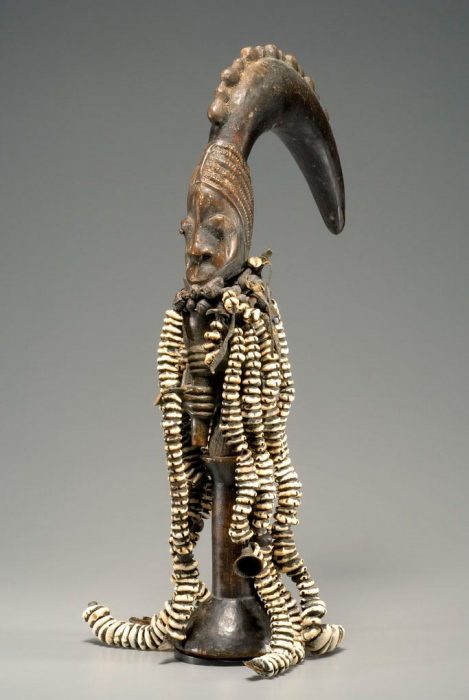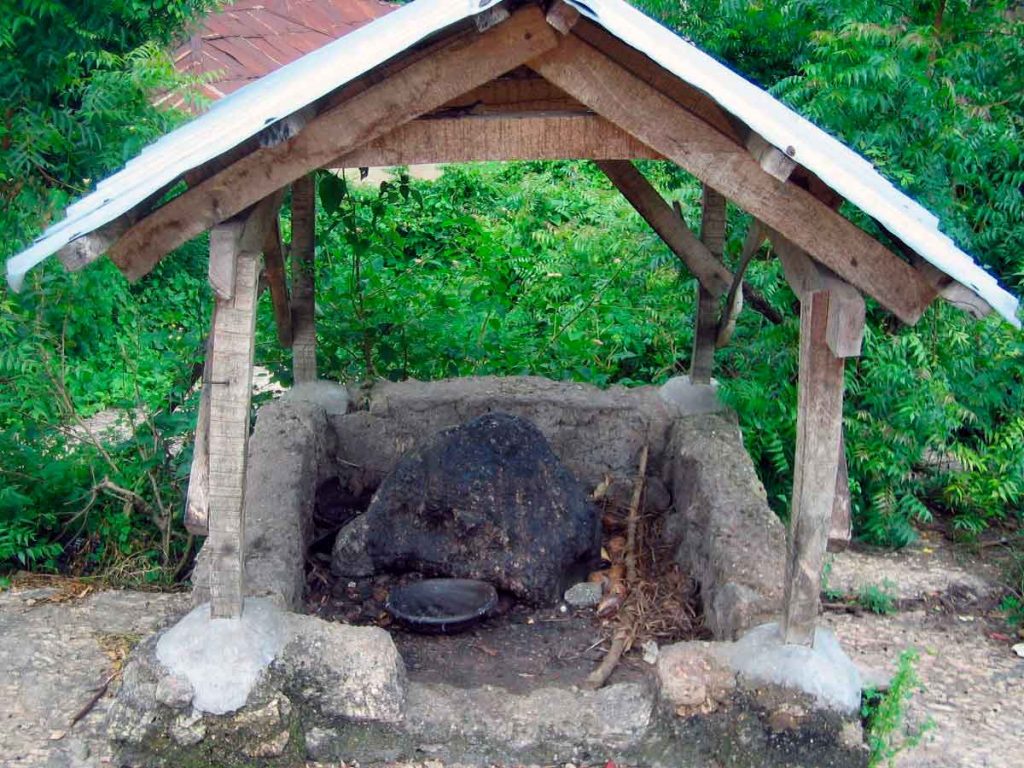Esu is one of the most important Orishas for traditional Yoruba practice, because there is no initiation without Esu being propitiated. In the Afro-Cuban practice of Ifá it is known as Elegua, although its correct name in Yoruba is Elegbara. We must remember that in the practice of Traditional Ifá there is no syncretization, so in Nigeria it is not known as the Santo Niño de Atocha, or any other name of any saint of the Catholic religion.
Who is Esu?
Many think that Elegbara is bad. However, within the traditional Yoruba culture, he is the only Orisa who never betrayed Orunmila and is the one who trades bad luck for good luck. He is also the one who collects clients for the market and is the one who eliminates catastrophe or difficulties in our lives.
It is the Orisa who has the facility to disturb a person without his knowing it and the one who has thousands of medicines to grant his wishes to the person who performs the sacrifice. It makes their enemies fight each other for no apparent reason. He is the Orisa who made a pact of friendship with Orunmila, in which Elegbara would get everything Orunmila wanted and Orunmila promised to constantly make sacrifices to him.

How to get initiated in Elegbara
The person who wishes to be initiated into Esu must first acquire knowledge of this Orisa. After she is able to take care of herself, she can begin her initiation with the babalawo with whom she receives her learning. We must remember that in Traditional Yoruba practice the person interested in initiation must acquire knowledge before initiating. Elegbara’s initiation is no exception. Basic knowledge about Esu and how to promote it is available in Ifá Tradicional Pro.
The babalawo must know which type of Elegua will be most beneficial to the person. The initiations are not carried out by chance, because each initiation must have an objective in the person’s life and these are recommended in our Odu de Ifá, either the Isefa (first Ifá initiation) or the Itelodu (Ifá initiation) , as well as within divination with an Olorisa (a person initiated into an Orisa).
How to feed Esu
To care Esu there are key materials that should never be missing, while there are others that should never be used.
Propitiation to Elegbara
In the propitiation of the Orisa Elegbara, also known as Elegua, Epo (palm oil) can never be missing. Other materials such as Obi abata (four-lobed Obi Kola), salt, pepper, Emu (Palm Wine) can also be used among other ingredients.
Some taboo of Esu
Elegbara’s wife is Abero and she is always in front of him. His mother is Woroko and lives behind him. Both can be represented by the head of a hutia (large African rat), so neither the head nor the tail of the hutia can be used to make a sacrifice to this Orisa.

Types of Esu in traditional practice
Usually this Orisa is represented with the Yangui stone, but there are several types that fulfill different tasks: Esu Odara is the one who carries the sacrifice to heaven. Esu Apede is the one who helps in the divination and the works that the priest performs. Eshu Awure is the one who helps to get lucky. Esu Alaje is the one who helps to obtain wealth. Esu Ogo is also used to acquire luck and also health. Esu Iya is the one who fights against our enemies.
